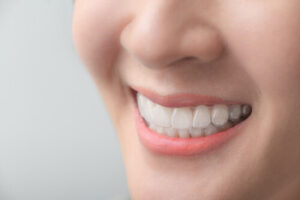If you’ve ever looked in the mirror and longed for a whiter smile, you’re certainly not alone. Teeth whitening has become one of the most sought-after cosmetic dental treatments, and among the many choices available, teeth whitening strips stand out as a convenient and budget-friendly option. But the big question remains: are teeth whitening strips safe?
Let’s unpack that in this detailed guide. We’ll walk you through how they work, what ingredients they contain, whether they can damage your teeth or gums, and how to use them safely. We’ll also touch on professional alternatives and tips to maintain your results.
What Are Teeth Whitening Strips and How Do They Work?
Teeth whitening strips are thin, flexible pieces of plastic coated with a whitening gel containing bleaching agents. The active ingredient is most commonly hydrogen peroxide or carbamide peroxide, both of which help break down surface stains caused by coffee, red wine, smoking, or certain foods.
When applied to the teeth, the strips press the whitening gel against the tooth enamel and begin the process of bleaching. Most products recommend leaving the strips on your teeth for 30 minutes a day over a period of one to two weeks. During this time, the whitening agent gets to work, lifting tooth stains and making your smile appear whiter.
Are Whitening Strips Actually Safe?

For the majority of people, teeth whitening strips are safe when used as directed. They’ve been widely studied, and most reputable brands have been approved by dental associations. However, safety also depends on your individual dental health, how frequently you use them, and whether you follow the instructions correctly.
It’s important to understand that these products are not completely risk-free. Some users might experience tooth sensitivity, gum irritation, or minor enamel damage, especially if whitening strips are overused or not applied correctly.
What’s in Whitening Strips? A Look at the Ingredients
The primary bleaching agents in most whitening strips are:
- Hydrogen Peroxide: A fast-acting agent that breaks down quickly and starts working almost immediately. It’s common in short-use whitening products.
- Carbamide Peroxide: A slower-acting alternative that breaks down into hydrogen peroxide over time. Often used in longer treatments or gentler formulas.
Other less common whitening agents include chlorine dioxide, which is sometimes found in cheaper products but is known to be harsher on enamel and is generally not recommended.
Be wary of unfamiliar ingredients or unregulated products sold online. Before using any whitening product, always check for professional endorsements or approvals from dental organisations.
Can Whitening Strips Damage Teeth?
You may have heard people asking: Can whitening strips damage teeth? In rare cases, yes.
Overuse or misuse of whitening strips can cause:
- Increased tooth sensitivity: Bleaching can increase tooth sensitivity, making your teeth more reactive to hot or cold foods and beverages.
- Enamel erosion: Using whitening strips too frequently or leaving them on longer than recommended can erode tooth enamel, particularly if they contain high levels of peroxide.
- Gum irritation: If the gel touches your gum tissue, it can lead to temporary inflammation or discomfort.
To minimise these risks, avoid overlapping treatments, don’t leave the strips on longer than directed, and never use expired or unapproved products.
Are Whitening Strips Safe for Everyone?
While generally safe, whitening strips are not for everyone. Here’s who should think twice:
- People with sensitive teeth: If you already experience sensitivity, the bleaching agents in strips might make it worse.
- Children under 18: Young teeth have less developed enamel, making them more prone to damage.
- Pregnant or breastfeeding women: There isn’t enough research on safety in this group, so it’s best to avoid it until after pregnancy or nursing.
- People with dental restorations: If you have crowns, veneers, or fillings on your front teeth, the strips will not whiten them, leading to uneven colouration.
If any of these apply to you, it’s worth discussing alternatives with your dentist before starting treatment.
Tips for Using Whitening Strips Safely
If you decide to use whitening strips, follow these tips to reduce risks and get the best results:
- Follow the instructions: Always stick to the time limits and frequency recommended on the packaging.
- Avoid contact with gums: Trim the strips if necessary to keep the whitening gel off your gum tissue.
- Don’t brush immediately before use: Brushing can temporarily weaken enamel and increase sensitivity.
- Avoid acidic or staining foods: During and after treatment, avoid coffee, wine, citrus fruits, and tobacco.
- Space out treatments: Don’t overdo it. Limit use to a few times a year unless advised otherwise by your dentist.
What About Tooth Sensitivity?

If you experience teeth sensitivity:
- Use sensitive toothpaste for teeth during and after treatment.
- Take a break between whitening sessions.
- Apply fluoride gel or rinse to strengthen enamel.
- Consult your dentist if the sensitivity lingers or worsens.
Whitening Strips vs Professional Teeth Whitening
When deciding how to whiten your teeth, weighing the differences between at-home whitening strips and professional teeth whitening done at a dental clinic is helpful.
Whitening Strips:
- It can be used conveniently at home without a dentist’s supervision.
- Contains a lower concentration of whitening agents such as hydrogen peroxide or carbamide peroxide.
- Provide gradual results over several days or weeks.
- They are more affordable and widely available.
- They pose a higher risk of misuse, including overuse or incorrect application, which may result in tooth sensitivity or enamel damage.
Professional Teeth Whitening:
- It is performed under the supervision of a qualified dentist.
- Uses higher-strength bleaching agents, allowing for more noticeable results in a shorter time.
- Offers a more precise application, reducing the risk of gum tissue irritation or damage to tooth enamel.
- It is typically more expensive due to the treatment’s expertise, equipment, and strength.
- It may include custom trays or light-activated systems for enhanced whitening outcomes.
Professional whitening may be the better choice if you’re looking for dramatic results in a short period. However, if you’re after a gradual, budget-friendly option, teeth whitening strips could be suitable, just be sure to use them correctly and safely.
Common Myths About Whitening Strips
Let’s clear up some common misconceptions:
- Whitening strips weaken your teeth permanently: Not necessarily. Used correctly, they won’t damage tooth structure permanently.
- The longer you leave whitening strips on, the whiter your teeth will get. That is not true, and doing so may harm your enamel or gums.
- They work for all types of stains: Whitening strips are most effective on surface stains. They might not work on discolouration caused by medication or trauma.
- Only people with bad stains need whitening: Even mild staining from certain foods can be improved, depending on your cosmetic goals.
Maintaining Your Bright Smile After Whitening
Once you’ve achieved brighter teeth, how do you make it last?
- Avoid staining foods and beverages like coffee, tea, red wine, and curry.
- Drink with a straw when possible to reduce liquid contact with your teeth.
- Rinse your mouth with water after meals or snacks.
- Brush twice a day with a whitening or enamel-protecting toothpaste.
- Schedule regular dental visits for professional check-ups and thorough cleanings to maintain your oral health.
So, Are Teeth Whitening Strips Safe? Here’s the Final Verdict

If you have concerns about your tooth enamel, sensitive teeth, or specific dental conditions, it’s a good idea to speak with your dentist before beginning any teeth whitening treatment to ensure it’s safe and suitable for you. Book an appointment with Dental 266 at 02 9051 0600 to get professional guidance tailored to your smile.
With a little care and attention, whitening strips can help you achieve a cleaner, more confident look without compromising your dental health.
References
- Verywell Health. (n.d.). What to expect from professional teeth whitening. Retrieved from https://www.verywellhealth.com/how-is-professional-in-office-teeth-whitening-done-1059032
- Medical News Today. (n.d.). Whitening strips: Do they work and how to use them. Retrieved from https://www.medicalnewstoday.com/articles/whitening-strips
Healthline. (n.d.). 9 foods and drinks that can stain your teeth. Retrieved from https://www.healthline.com/health/foods-that-stain-teeth






